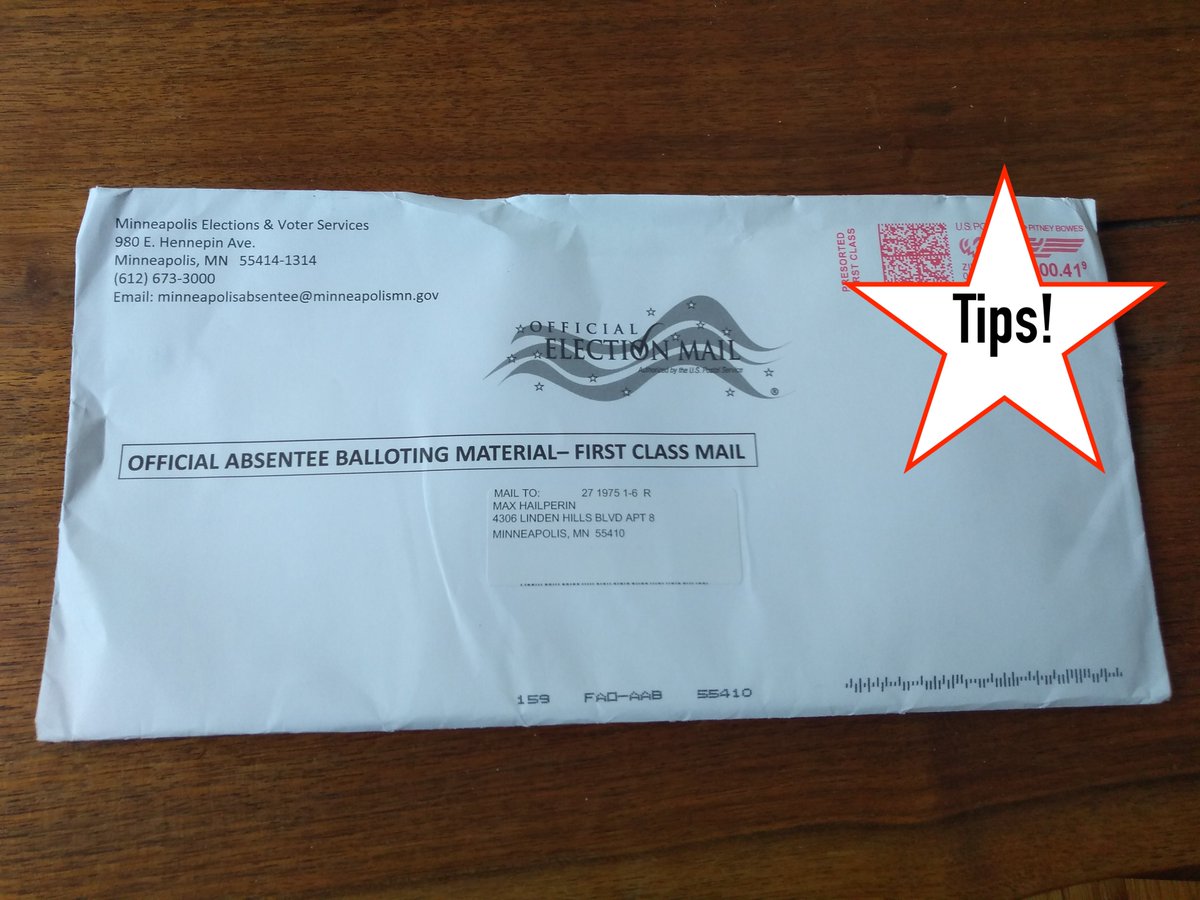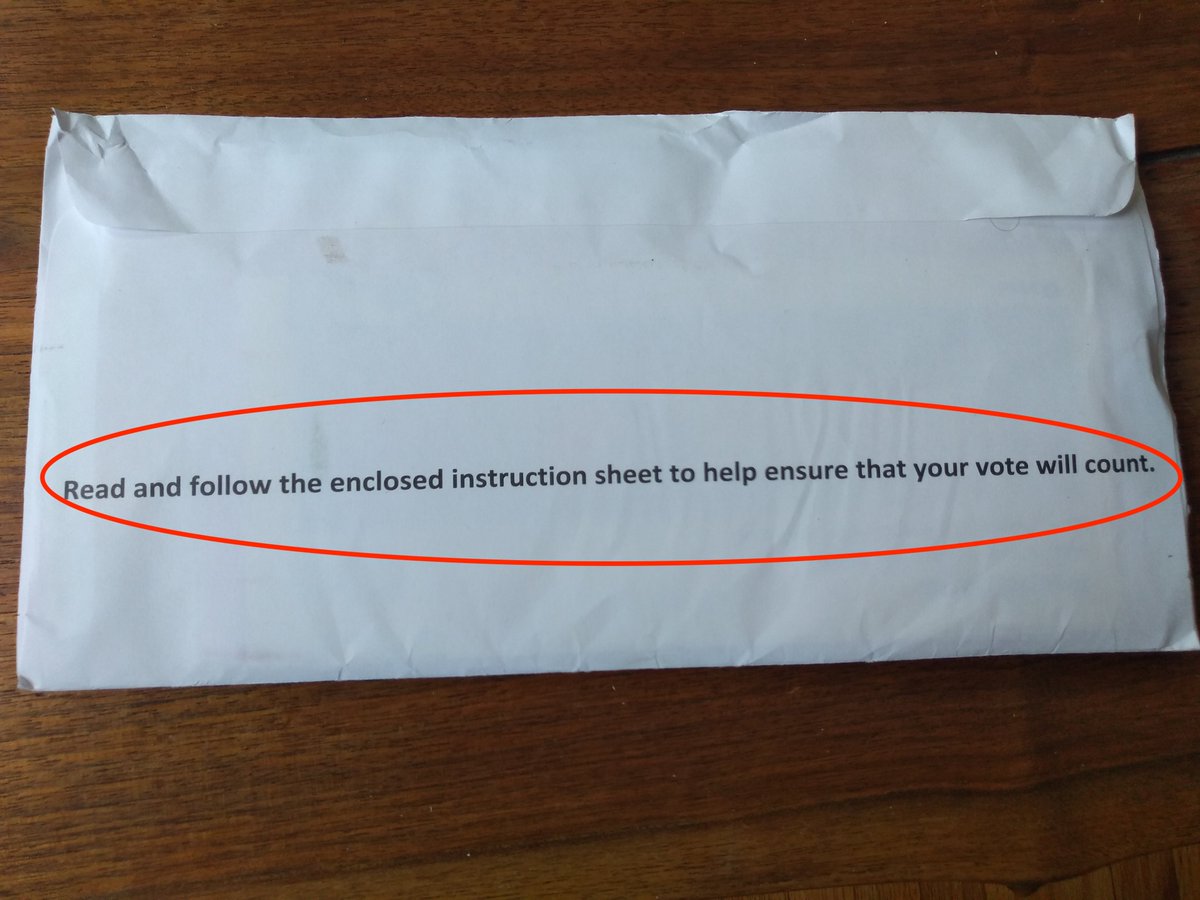
He/him; pedestrian, https://t.co/jmgxt3JJSy; retired computer scientist and dabbler in election geekery
How to get URL link on X (Twitter) App


 The first problem that drew public attention was errors in the printed ballots in several parts of the state. Here's Linnell's comments on that. youtube.com/live/5B91YGmdO…
The first problem that drew public attention was errors in the printed ballots in several parts of the state. Here's Linnell's comments on that. youtube.com/live/5B91YGmdO…

 These are three of the most common forms. On top, examples from an election-day polling place and an absentee envelope. On bottom, a certificate from a direct-balloting early voter. There are other variants too. But it's a lot of boxes of paper, whatever the form.
These are three of the most common forms. On top, examples from an election-day polling place and an absentee envelope. On bottom, a certificate from a direct-balloting early voter. There are other variants too. But it's a lot of boxes of paper, whatever the form.

 As each envelope is accepted, that is marked on the bottom of the envelope itself with the ballot board members' initials, and it is recorded into the computer.
As each envelope is accepted, that is marked on the bottom of the envelope itself with the ballot board members' initials, and it is recorded into the computer. 

 The point the table makes is that many of the ballots cast over the past three general elections were handled by the county. Using the correct numbers shown here doesn't qualitatively change this. If you believe county handling is bad, a few percentage points won't matter. 2/9
The point the table makes is that many of the ballots cast over the past three general elections were handled by the county. Using the correct numbers shown here doesn't qualitatively change this. If you believe county handling is bad, a few percentage points won't matter. 2/9 

 As the law says, "A voter registration application accepted prior to August 1, 1983, is not deficient for lack of date of birth." Because back then, that information wasn't collected. revisor.mn.gov/statutes/cite/…
As the law says, "A voter registration application accepted prior to August 1, 1983, is not deficient for lack of date of birth." Because back then, that information wasn't collected. revisor.mn.gov/statutes/cite/…


 This refers to Emmer's run for Governor in 2010. The most important point is that he only "face[d] a contested election" in the sense that he himself contested it. There was no real question that Mark Dayton won. Emmer could simply have conceded. Instead, he fought on.
This refers to Emmer's run for Governor in 2010. The most important point is that he only "face[d] a contested election" in the sense that he himself contested it. There was no real question that Mark Dayton won. Emmer could simply have conceded. Instead, he fought on.

https://twitter.com/refundpolicy/status/1667327096790679553
 These regions A–D follow a consistent pattern if one thinks in terms of upriver/downriver and riverward/landward rather than north/south/east/west. The upriver and riverward sides of the blocks have odd numbers, the dowriver and landward sides have even numbers. 2/5
These regions A–D follow a consistent pattern if one thinks in terms of upriver/downriver and riverward/landward rather than north/south/east/west. The upriver and riverward sides of the blocks have odd numbers, the dowriver and landward sides have even numbers. 2/5
https://twitter.com/GraceBannasch/status/1665098983931355139On the one hand, the Minneapolis office is vastly larger. But on the other hand, even the one-person version of Shutesbury's office is more than 4 times as large, per capita, than even the 58-person Minneapolis office would be.


 In 2010, the Minnesota Legislature reformed the processing of absentee ballots, which had been troublesome in the 2008 election for US Senate. They enacted a new section of statute, 203B.121, establishing absentee ballot boards with two kinds of members.
In 2010, the Minnesota Legislature reformed the processing of absentee ballots, which had been troublesome in the 2008 election for US Senate. They enacted a new section of statute, 203B.121, establishing absentee ballot boards with two kinds of members. 

 To simplify, I lumped together specific reasons for rejection into three broad categories, each making up roughly 1/3 of that 2%. (There's also a catch-all "Other," but that literally is invisible in the chart.) I called those three categories Identity, Late, and Registration.
To simplify, I lumped together specific reasons for rejection into three broad categories, each making up roughly 1/3 of that 2%. (There's also a catch-all "Other," but that literally is invisible in the chart.) I called those three categories Identity, Late, and Registration.

 Clearly the sharp drop from March of 2020 to April was mostly about how high March was, not how low April was. April 2020 still had more registrations than 2016 despite Stay-at-Home being in effect March 28th. Indeed even May of 2020 slightly exceeded 2016.
Clearly the sharp drop from March of 2020 to April was mostly about how high March was, not how low April was. April 2020 still had more registrations than 2016 despite Stay-at-Home being in effect March 28th. Indeed even May of 2020 slightly exceeded 2016.

 Tip 1: Right on the back of my mailing envelope, it says to "read and follow the enclosed instruction sheet." I'd add to also read the instructions on the ballot, the three envelopes, and the registration form, if you needed one.
Tip 1: Right on the back of my mailing envelope, it says to "read and follow the enclosed instruction sheet." I'd add to also read the instructions on the ballot, the three envelopes, and the registration form, if you needed one. 

 Recently hospitalizations have been plateaued, rather like the plateau in mid May. That was a temporary leveling out in the ascending part of the curve. So maybe the downward part continues as well, with some bumps along the way, of which this is one.
Recently hospitalizations have been plateaued, rather like the plateau in mid May. That was a temporary leveling out in the ascending part of the curve. So maybe the downward part continues as well, with some bumps along the way, of which this is one. 